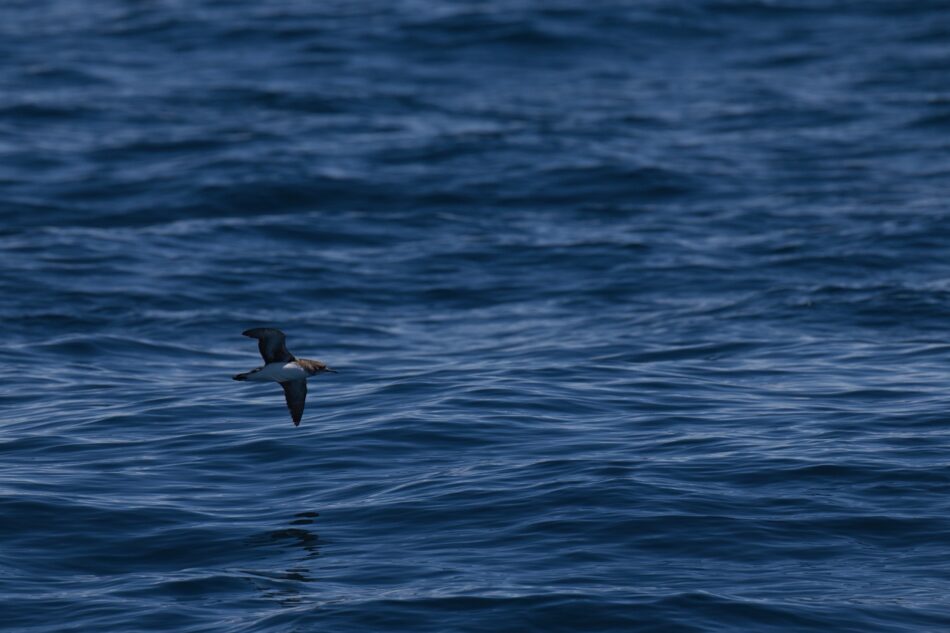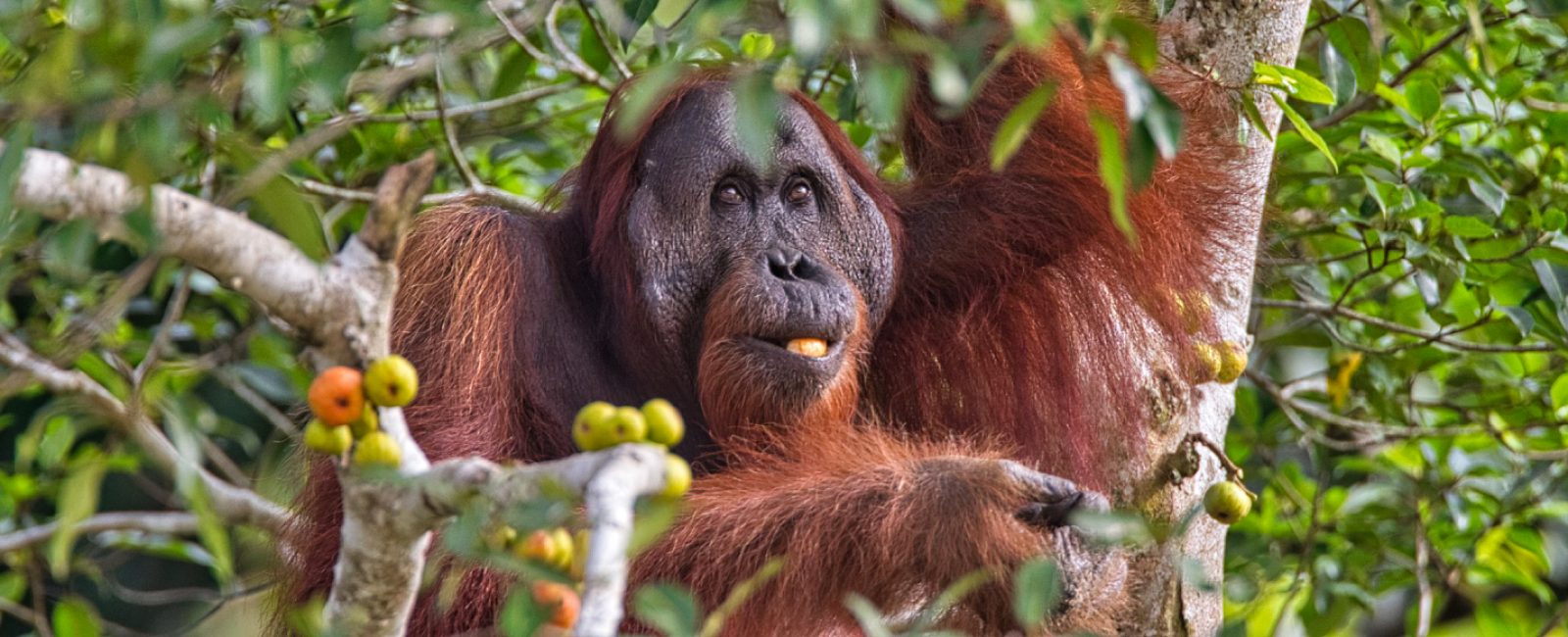
Stewart Island or Rakiura is New Zealand’s third largest Island, lying off the southern tip of the South Island. Over 85% of the island is now designated as a National Park with access limited to a passenger only ferry or small plane flight. We opted for the ferry option which takes around an hour to travel the 30 or so kilometres across the Foveaux Strait. The ferry crossing was our first opportunity to see the seabird life that the island is famous for.
We departed at 1pm on a warm sunny day with calm sea conditions and little to no wind. Not ideal sea watching weather but was quite productive nevertheless.

It wasn’t long before started to pick up albatross in the ferry’s wake.
This stunning Salvin’s Albatross was seen early enough to still have the South Island in the background.
The albatross encountered for most of the journey were either Salvin’s or Buller’s……


….although we did start to encounter a few Shy Albatross when we got closer to Stewart Island.

Also seen closer to Stewart Island were rafts of Sooty Shearwater – congregations of 50-100 birds feeding at the surface. There were often a few White Fronted Terns around these groups too.


Some of the Sooty Shearwaters came close enough to the ferry for a decent photo.
With the majority of the island set aside as National Park, the only settlement is in and around Oban Island with most visitors spending their time out on the water or walking the fantastic hiking trails. Unfortunately all of the specialist pelagic or wildlife tours were fully booked during the dates were were around (a big cruise ship was in town and rebooked a lot of activities) but we did manage to get an afternoon fishing with XXX. This proved to be an excellent alternative to the more dedicated birding trips with numerous birds seen at very close range.
Our trip left the port at 1:30 and when we arrived at the harbour, there were already a few albatross around the boat, waiting for the scraps from the morning fishing trip! It was warm and sunny for our departure but turned cloudy and gloomier as the afternoon wore on.


Once out on the water, the Shy albatross soon started congregating around the boat providing great views. Slightly surprisingly, these were the only species of albatross seen on the trip apart from the Buller’s that was waiting in the harbour.








A couple of rocky islands just outside the harbour provided a few more species including the Stewart Island Shag.
This shag or cormorant comes in both a pied and bronze phase – both of which can be seen in this photo.


The terns seemed to prefer the solitude of the smaller outcrops.
This photo nicely shows the size difference between the larger White Fronted Terns (left) and the smaller Black Fronted Tern (right).
The latter breed inland and are seen around the gravel riverbeds on the South Island but migrate to the coast.

On land, unless you are embarking on some of the wilderness hikes that traverse the island, good birding can be had in and around the township of Oban. Variable Oystercatchers and a family of Paradise Shelducks were resident on Half Moon Beach.


And endemics like the Kereru and Tui were relatively common around the parks and gardens of Oban, but getting clear views or them was a little more tricky.


The front that brought the wet and cloudy weather over the past 24 hours had moved on and we work to a clear sunny day for our last morning on Oban. It was particularly warm and windless for our lunchtime ferry back to the South Island.
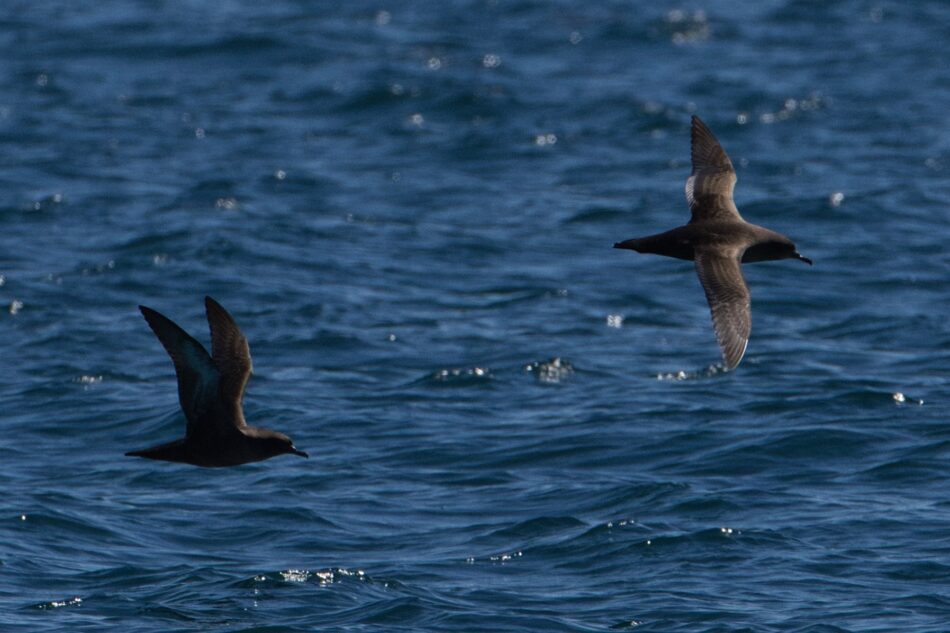
The feeding flocks of Sooty Shearwaters and White Fronted Terns were encountered as soon as we left the harbour.
Other than that, the only bird activity seemed to be birds the ferry was flushing off the surface as it sped back to Bluff.
The first of which was a fantastic ‘Chatham’ Brown Skua! This pale hind neck which can be clearly seen in these photos distinguishes this sub-species of Brown Skua.
Stewart, Chatham and Snares Islands are the only breeding locations and adults are resident all year round on Stewart Island. A bird I was hoping to see and delighted to pick it up at the last hour!
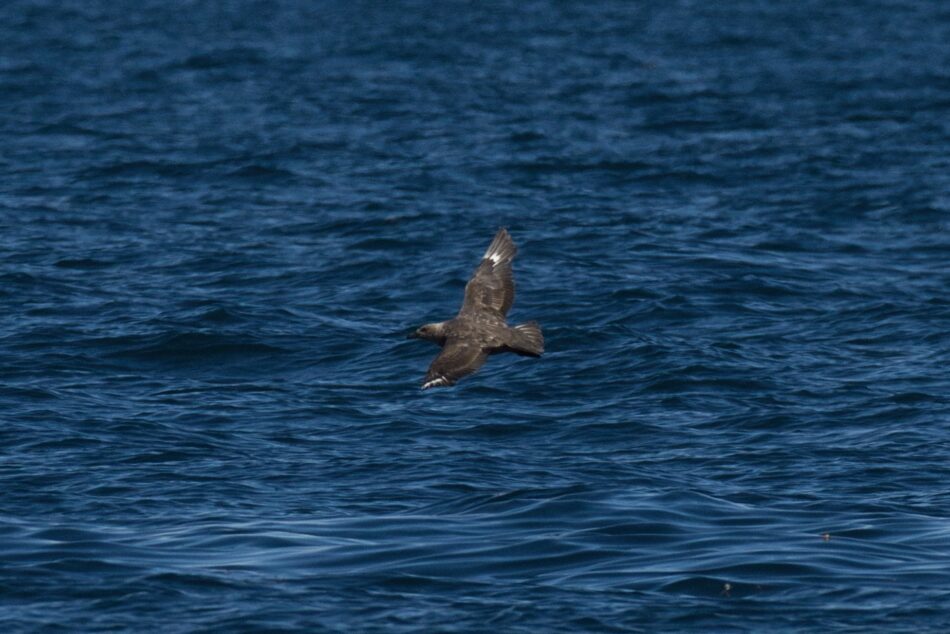

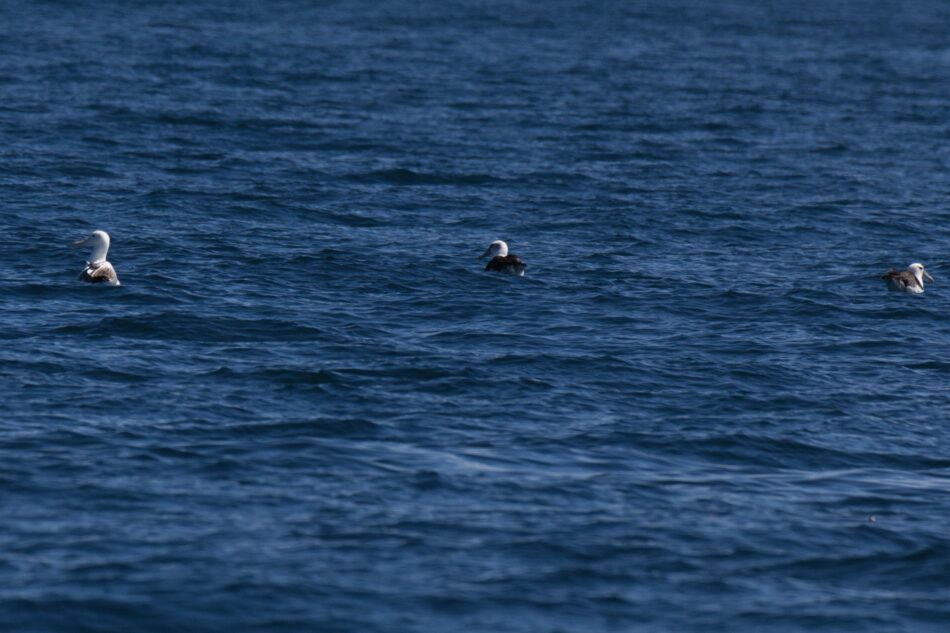
A few albatross were also seen on the water – far enough away to avoid being disturbed by the ferry and too far to positively id. This great albatross stood out compared to the smaller two Shy Albatross.
This is another angle of the great albatross spotted above. Dark ‘lips’ would point to a Royal Albatross with the amount of white on the wing suggesting a Southern Royal.
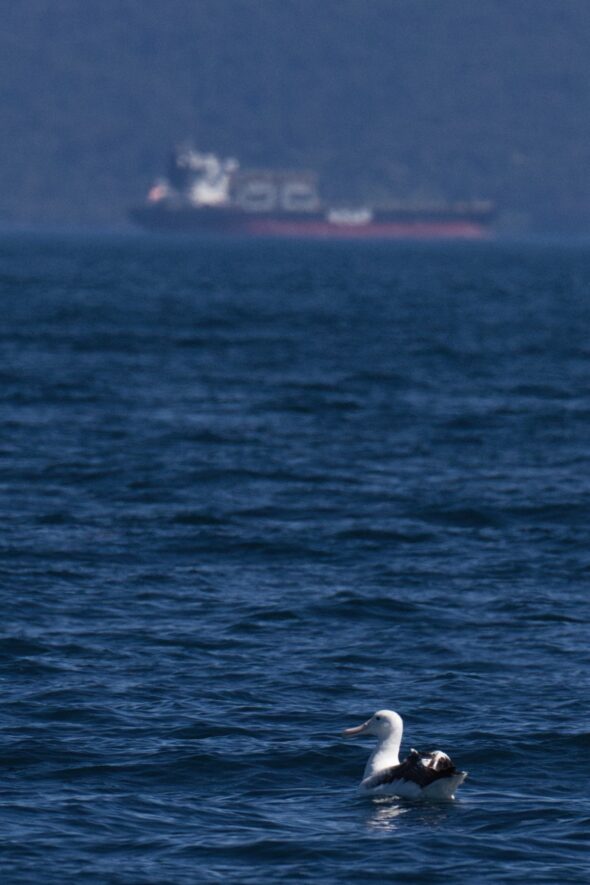
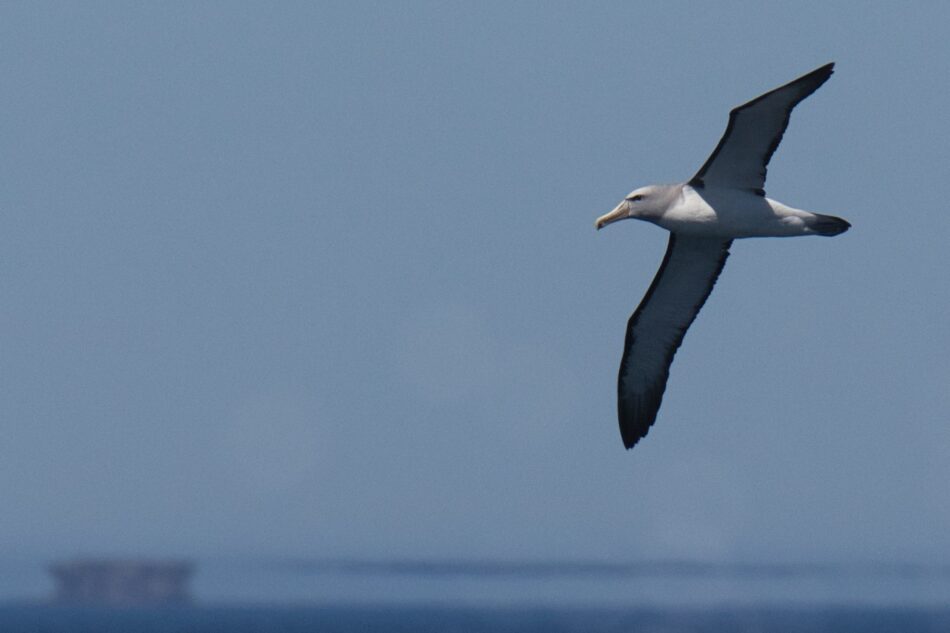
A couple of Salvin’s Albatross seemed to use the ferries wake to move locations on an otherwise windless day. Twice birds were seen making an effort to get behind the ferry, glide for a mile or two before dropping out to the side when they go to where they wanted to go.
A few smaller pelagic species were seen including a storm petrel which unfortunately will remain unidentified
Better views were obtained of this Fluttering Shearwater that flew alongside the ferry for a minute or so.

